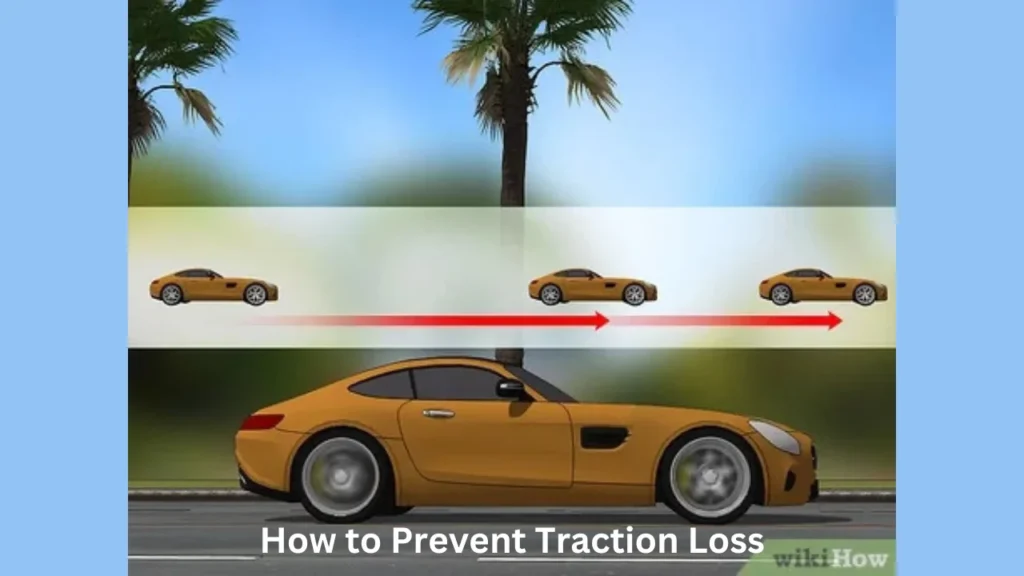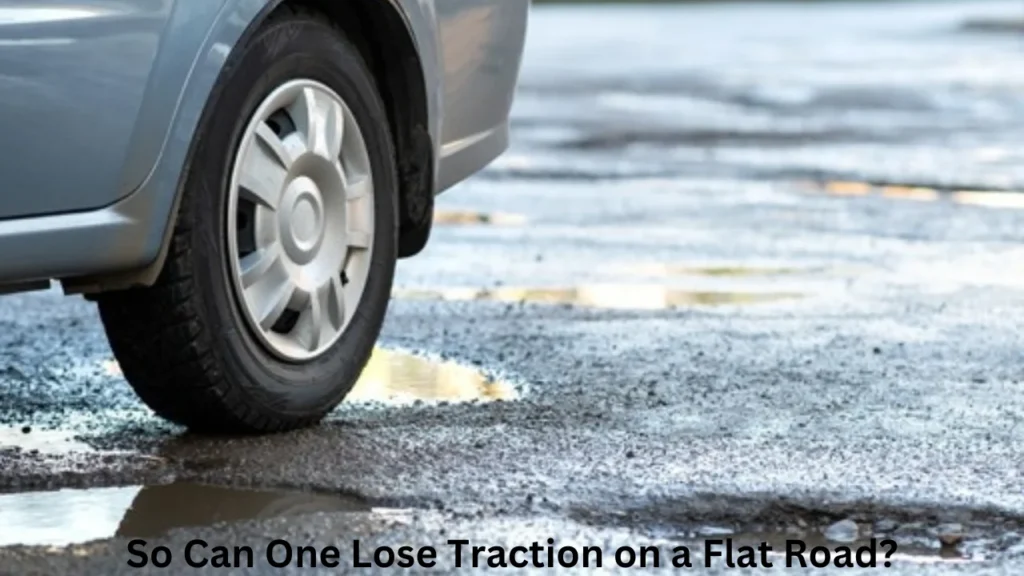When driving, many people think that traction issues only arise on steep, slippery, or uneven roads. However, it might surprise you to learn that losing traction is also possible on a flat road. Understanding how this happens can help prevent accidents and ensure safe driving. So can one lose traction on a flat road? Absolutely. This article delves into the factors that can cause a vehicle to lose traction on flat surfaces and how drivers can avoid these dangerous situations.
What is mean by So can one lose traction on a flat road?
Losing traction on a flat road can happen when there is insufficient friction between the tires and the road surface. This can occur due to several factors, such as wet, icy, or oily road conditions, which reduce grip. Additionally, worn-out tires with smooth or damaged tread patterns are less effective at maintaining traction. Sudden acceleration, sharp turns, or hard braking can also cause a loss of traction, even on flat roads, as these actions disrupt the balance between the tire’s grip and the force being applied. Maintaining proper tire maintenance, avoiding sudden movements, and adjusting driving behavior to road conditions are essential for preventing traction loss.
Read Also: TheBoringMagazine: A Fresh Take on Lifestyle and Culture
What Causes Traction Loss?
Before diving deeper into the specifics, it’s important to understand what traction means. Traction refers to the friction between a vehicle’s tires and the surface of the road. This friction allows the tires to grip the road and enables safe driving. However, when this grip is compromised, the tires lose contact with the road, making it difficult to control the vehicle. So, can one lose traction on a flat road? Yes, and several factors contribute to this:
Wet or Icy Surfaces
A common cause of traction loss is driving on wet or icy roads. Even though the road may be completely flat, water, ice, or snow can significantly reduce friction between the tires and the road surface. This reduction makes it easy for the vehicle to slide, leading to a loss of control.
Oily or Greasy Roads
Oil spills or grease on the road can also lead to traction loss. These substances create a slick surface where the tires can’t grip properly, making the car slip, even on flat roads. This often happens after it rains, as oil can rise to the surface and mix with water, further reducing traction.
Worn-Out Tires
Tire maintenance is crucial when it comes to preventing traction loss. Tires that have worn-out tread patterns or are underinflated can’t maintain a strong grip on the road, even when it’s flat. Without proper tread, water cannot be displaced effectively, and the risk of hydroplaning increases. So can one lose traction on a flat road with bad tires? The answer is a resounding yes.
Excessive Speed
Driving too fast can also lead to a loss of traction. When you’re speeding, your tires may not have enough time to grip the road properly, especially if the surface is wet or compromised. Even a slight turn on a flat road can cause your tires to lose contact with the ground if you’re going too fast.
Sudden Acceleration or Braking
Abrupt actions like slamming on the brakes or quickly accelerating can cause the tires to lose their grip, leading to a skid. Even though the road may be flat, these sudden changes in speed can cause your tires to break free from the road surface, resulting in traction loss.
The Importance of Tire Maintenance
Maintaining your tires is key to avoiding traction loss. Regularly checking tire pressure, ensuring the tread is sufficient, and rotating tires are all important steps in tire care. When asked, “so can one lose traction on a flat road?” tire experts will always emphasize the importance of proper tire maintenance.
| Tire Condition | Risk of Traction Loss |
|---|---|
| Worn-Out Tread | High |
| Properly Maintained | Low |
| Underinflated | High |
| Overinflated | Moderate |
Ensuring your tires are in top condition significantly reduces the likelihood of losing traction, even in adverse weather conditions.
Weather and Road Conditions
Weather plays a significant role in how much traction your vehicle has on any given road. Flat roads may seem safer than steep ones, but when weather conditions deteriorate, they can become just as hazardous. Rain, snow, and ice are the primary culprits behind traction loss.
In the case of rain, when water fills the small spaces in the road’s surface, it creates a barrier between the tires and the pavement. This situation, known as hydroplaning, is particularly dangerous. Drivers often wonder, so can one lose traction on a flat road when it’s raining? Yes, even a small amount of rain can reduce friction and cause a vehicle to hydroplane.
Snow and ice present even more challenges. Black ice, which is nearly invisible on flat roads, can cause sudden loss of control. In these situations, even the best tires struggle to maintain traction, making it imperative for drivers to slow down and proceed with caution.

How to Prevent Traction Loss
Drive at a Safe Speed
One of the most effective ways to prevent traction loss is by driving at a reasonable speed. When you drive too fast, your tires may not have enough time to maintain proper grip on the road, especially during turns or when the surface is wet. Slowing down gives your tires a better chance to maintain contact with the road, significantly reducing the risk of sliding or skidding.
Maintain Proper Tire Care
Tire maintenance plays a crucial role in preventing traction loss. Regularly check your tires for proper inflation, as underinflated or overinflated tires can compromise their ability to grip the road. It’s also essential to inspect the tread. Tires with worn-out treads are more prone to losing traction, particularly in wet conditions. Rotating your tires regularly ensures even wear and maximizes their effectiveness.
Avoid Sudden Movements
Sudden acceleration, abrupt braking, or quick turns can lead to traction loss, even on a flat road. These rapid actions can cause your tires to lose contact with the road surface, resulting in a skid. Instead, make smooth and gradual movements, allowing your tires to maintain better grip and control.
Be Mindful of Road Conditions
Understanding and adapting to road conditions can significantly help in preventing traction loss. On rainy, snowy, or icy roads, it’s essential to reduce speed and drive with extra caution. Wet or icy surfaces reduce friction between the tires and the road, making it easier to lose traction. Even though the road may appear flat and safe, these conditions can quickly lead to skidding if you’re not careful.
Use High-Quality Tires
Investing in high-quality tires with good tread patterns can significantly reduce your chances of losing traction. Tires designed for all-weather or specific conditions (like snow tires) provide better grip in challenging environments. It’s also important to match your tires to your vehicle’s requirements, as this will ensure optimal performance and safety.
Read Also: Discover Schrecksee: A Hidden Gem in the Bavarian Alps
Apply Brakes Smoothly
When you need to stop your vehicle, applying the brakes smoothly is key to avoiding traction loss. Slamming on the brakes can cause your tires to lock up and lose grip on the road. Use a gradual and controlled braking motion, allowing your tires to maintain traction and avoid slipping.
Reduce Speed in Wet or Icy Conditions
Driving on wet or icy roads is one of the most common causes of traction loss. Even though the road may be flat, these conditions make it harder for your tires to grip the surface. Reducing your speed is crucial, as it allows your tires to have better contact with the road, minimizing the risk of sliding or hydroplaning.
Monitor Road Surfaces
Keeping an eye on the road surface is another way to prevent traction loss. Flat roads can still have hidden dangers, such as oil spills, debris, or black ice, which can reduce tire grip. Being aware of these potential hazards and adjusting your driving accordingly can prevent dangerous situations.
Frequently Asked Questions
Can you lose traction on a flat road if your tires are new?
Yes, even with new tires, so can one lose traction on a flat road if the surface is slippery due to rain, ice, or oil, reducing the tire’s grip.
Does driving too fast lead to losing traction on a flat road?
Yes, so can one lose traction on a flat road when driving at high speeds, as tires may not grip the road properly, especially in wet or slippery conditions.
How do weather conditions affect traction on flat roads?
In rainy, snowy, or icy conditions, so can one lose traction on a flat road because these elements reduce the friction between the tires and the road surface.
Can sudden braking cause traction loss on flat roads?
Yes, so can one lose traction on a flat road when sudden braking occurs, as it can cause the tires to lose their grip on the road, leading to a skid.
Conclusion
In conclusion, the question “so can one lose traction on a flat road?” can be answered with a definite yes. Traction loss can occur due to several factors, such as poor road conditions, weather, and improper tire maintenance. Even though flat roads may seem safer, factors like rain, ice, and sudden movements can make them just as dangerous as steep or uneven terrain. The key to avoiding traction loss is proper tire care, maintaining a safe speed, and being mindful of road conditions. By following these steps, you can ensure safer journeys and avoid the dangers of losing control on flat roads.
